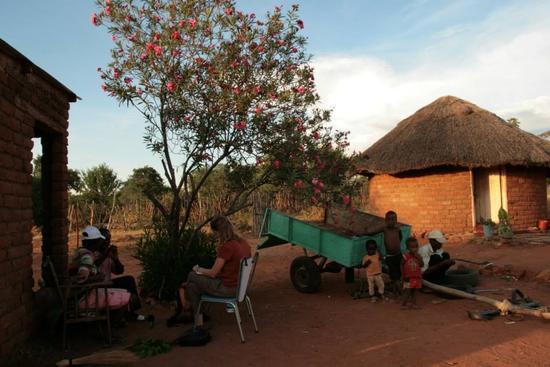Zénaïde Dervieux
Last update: 13 June 2017
Faced with the negative impact of protectionist approaches based on the exclusion of populations and the strict protection of natural resource, nature conservation should seek new modes to reconcile the conservation of biological diversity and local development. In this context, African conservation areas, inherited from the colonial period, must reconfigure themselves to meet the issues of local knowledge preservation and the equitable sharing of the benefits of biodiversity. As such, Community-Based Natural Resource Management (CBNRM) models aims at enabling local people to benefit from conservation efforts and the economic revenue related to wildlife management. However, it is difficult for those approaches to take in account local perceptions of the environment and the way people manage their natural resources themselves. Local people often remain on the margins of the political process, which ignore other forms of territory, parallel products of mobility, exchange and cooperation networks. From these social territories, how does the construction of local knowledge and the know-how on biodiversity that surrounds them emerge? On what ideas of the territory (productive, symbolic, administrative) are local management models of natural resource based? How can local people participate efficiently in managing their natural resources?
Since the Ndebele invasion, in the middle of the nineteenth century, Matabeleland North has been marked by a violent history that strongly unstructured local populations and their perceptions of the territory and the environment. This results in an heterogeneous population at the local level, both from a cultural and historical point of view. Their perceptions of the territory and the environment not only depend on forced human mobility but are also the result of arguable planning legislation and natural resource management. The tourism enhancement of Hwange National Park, built on the representation of the area as wild “nature”, constituted a denial of the history of the people of north-western Zimbabwe, and therefore the park is today a site of numerous of land claims. Moreover, CAMPFIRE introduced in 1989 an original system of natural resources management to make local people benefit from conservation and economic incomes related to wildlife. Until the economical crisis of the 2000s, it enabled a compensation of the economic impacts of the wildlife proximity and an attenuation of conflicts between managers and local populations. However, since then the CAMPFIRE programme has been facing structural and functional difficulties. In north-western Zimbabwe, the family intermarriages throughout the centuries allows us to question the criteria that are mobilized to define the “producer community”.
It is proposed, as part of this PhD, to understand these social territories whose processes impact the ability of people to be part of the CAMPFIRE programme. The global objective of this project is to contribute to research on participation procedures in CBNRM models and to reconsider the terms of local participation within the CAMPFIRE programme in Matabeleland North. The specific objectives of this research are to understand how the multiple identities of the families are used to assert rights over resources (natural, land tenure, sacred); to analyse how individuals mobilize their knowledge to support natural resource management; and to provide a reflection on how local and institutional standards for natural resource management are articulate. The PhD will rely on perceptions of the environment and the territory by people bordering the Hwange National Park. The methodology will be structured in three parts: (1) The reconstitution of lineage and clan histories and their spatial organization should show significant interbreeding between ethno-linguistic groups with contrasting backgrounds. (2) The use territories will be compared with conservation territories using toponimy and participatory mapping, which will determine the territorial division experienced and perceived by these population. (3) The knowledge of the species around them and the transmission modes of this knowledge will be an indicator of the relationship between people and their territory.
Last update: 13 June 2017

